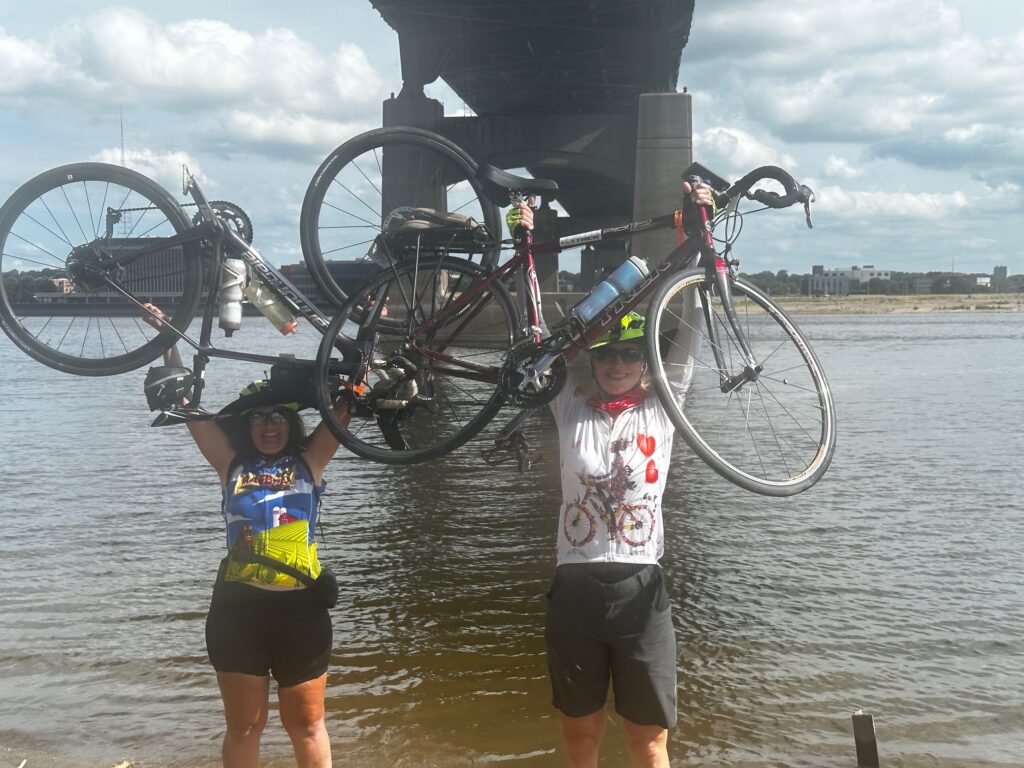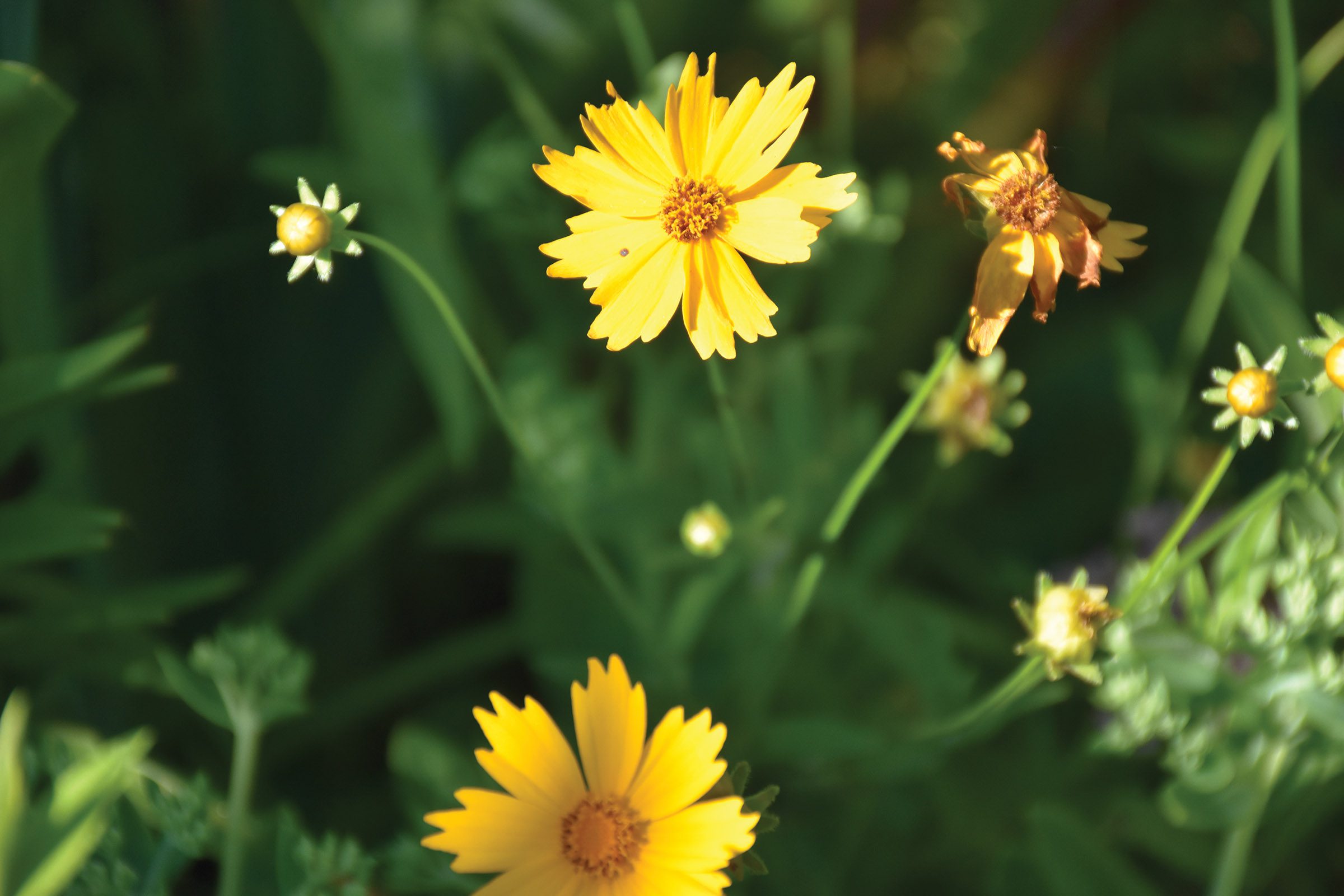Traveling Mercies: The Great Iowa Tradition of RAGBRAI
When you think about Iowa’s claims to fame, what comes to mind? Political caucuses, corn production, Caitlin Clark, Toppling Goliath? There’s a good argument to be made that RAGBRAI, the Register’s Annual Great Bicycle Ride Across Iowa, should top the list.
If you have lived in Iowa or if you love road biking, you likely know about RAGBRAI. It is the granddaddy of all non-competitive, multi-day cycling events. Other states have imitated it, but really there’s nothing else quite like it in terms of scope, longevity, and tradition.
And it’s still working its magic, after more than 50 years.
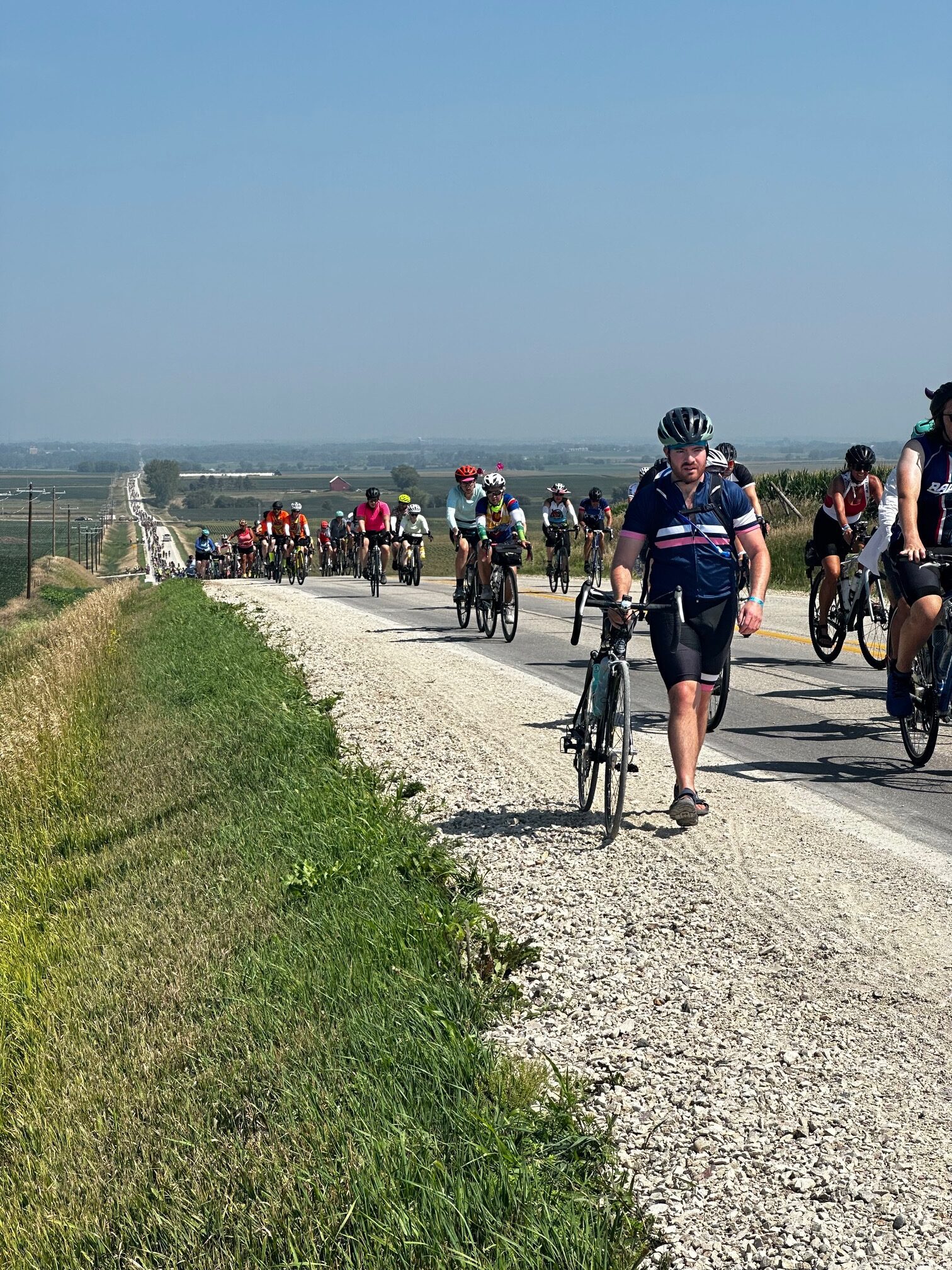
The Joy of Traveling by Bicycle
RAGBRAI’s first year was 1973. Two reporters from the Des Moines Register challenged their readers to meet them in Sioux City and spend a week riding their bicycles across the entire state to Davenport.
About 200 people showed up, and it set the template for an annual pedal-powered trek from the Missouri River to the Mississippi, every last week of July. RAGBRAI became enormous, drawing as many as 30,000 registered riders – with many more unregistered riders and support crews adding to the masses. Every year it takes a different route through the state. By 2020, according to the book Iowa Bike Towns, it had rolled through 85 percent of Iowa’s 944 towns.
The ride’s most recent trip through Iowa’s Driftless Area was in 2022, when it ended in Lansing. (For a marvelous chronicle of that year, with a focus on Lansing, check out Shift: The RAGBRAI Documentary.)
I write today from my current home in Decorah, which has served as an overnight town for RAGBRAI three times and once as a pass-through town, and remember my first RAGBRAI experience. I was excited to tackle this legendary event for its 50th anniversary last year (2023), and my friend Gail was pumped to join me. The route took us across the state from Sioux City to Davenport via Storm Lake, Carroll, Ames, Des Moines, Tama-Toledo, and Coralville.

There is something joyful and freeing about traveling by bicycle. You slow your pace and feel the open air. You let go of some of the illusions of control that attend motorized transportation. Cycling is about enjoying the journey and whatever happens along the way. Cycling raises your awareness of your own fragility and need for community. It is a way of being that requires both rapt attention as well as a deep trust in the world. It unlocks your inner child.
RAGBRAI represents the resources of an entire state inviting the world into that kind of relationship with our environment and with each other. And that is extraordinary.
Finding Community
RAGBRAI is a massive event. From the cyclist’s perspective, Iowa’s endless rows of corn appear to have sprouted wheels, donned bright colors, and hopped onto the road. As a rider, when you watch the riders cresting the next hill, it looks like they have come to a standstill – until you crest the hill yourself and realize it was an illusion.
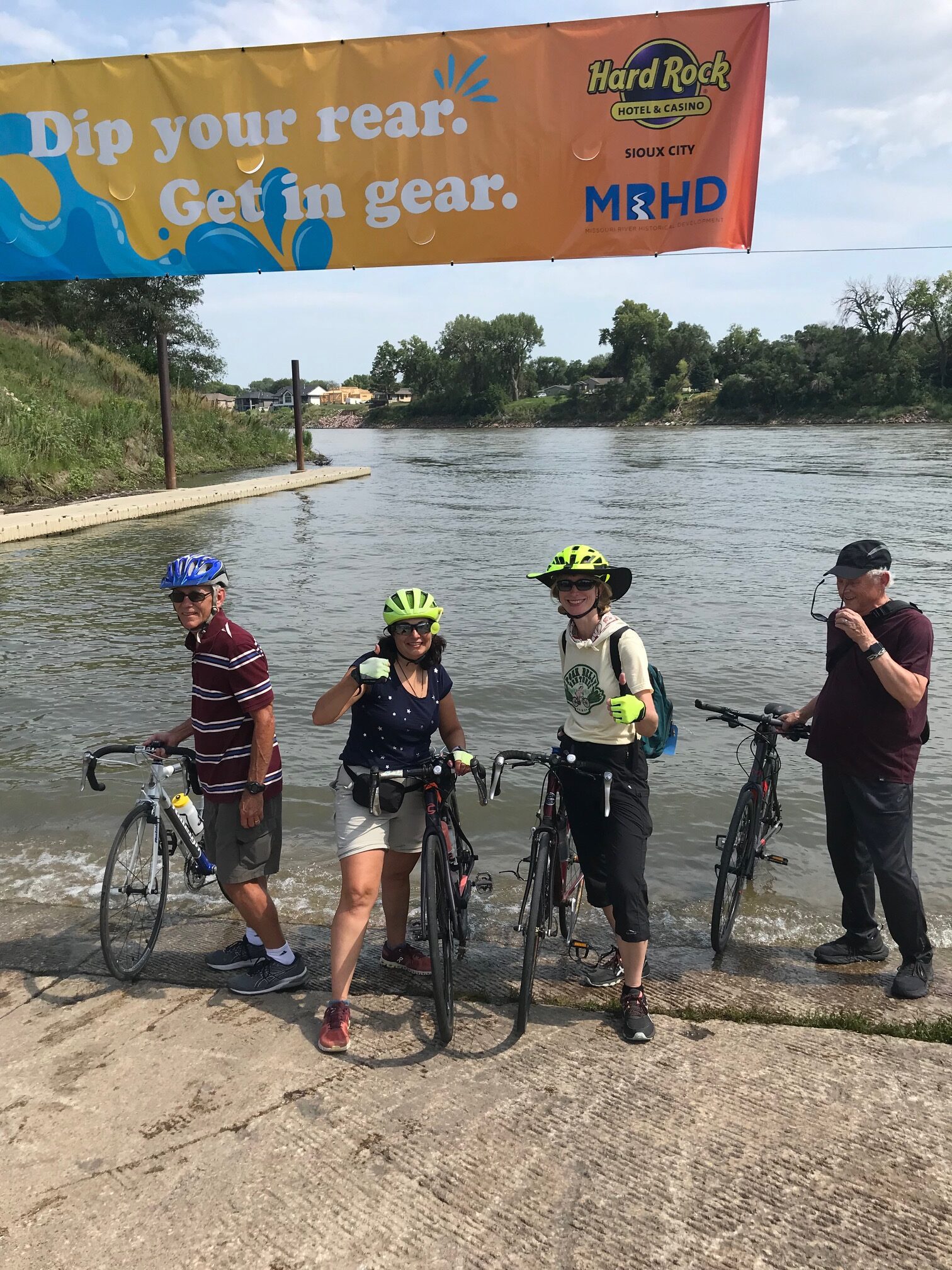
At the same time, RAGBRAI is an experience of personal connections, of creating a community. When you’re on RAGBRAI, although you may have joined the event alone, you’re never alone. Join the line, sit wherever there’s a free seat, ride wherever you can find a lane; wherever you are, you’ll be surrounded by others who are there for connection.
Getting into a conversation is easy as pie (a signature dish of the RAGBRAI experience) – a truth I discovered on a RAGBRAI charter bus from Davenport to Sioux City. Sliding into the first free seat on an already-crowded bus, I immediately started chatting with my neighbor, a man named Chuck.
Chuck lives in Tampa. He started cycling to lose weight, discovered RAGBRAI, and this was to be his fourth consecutive RAGBRAI. He told me about his family, his work, his bike – what type of bike you’re riding is always a topic of conversation among RAGBRAI cyclists, and a major source of entertainment for participants and spectators. He was excited to tell a newbie things that he loves about RAGBRAI: the US Air Force Cycling Team who help cyclists experiencing any kind of trouble; the Iowa Craft Beer Tent, where he plans to stop enough times to earn a free RAGBRAI T-shirt.
I arrived at the campground in Sioux City before Gail, and was wandering around figuring out where to pitch my tent when a fellow camper said, “Hey there! Do you need any help?” Bob from Summit, New Jersey, introduced himself.
One of Bob’s pals, Mark, has been riding RAGBRAI annually since 1999. He had distinct memories of spending a night in Decorah in 1999, when Day 5 traveled from Waverly all the way up to Decorah. He remembered eating lefse and drinking a lingonberry beverage at Nordic Fest. The next morning, he grabbed me to show me his vintage t-shirt showing off the 1999 route.
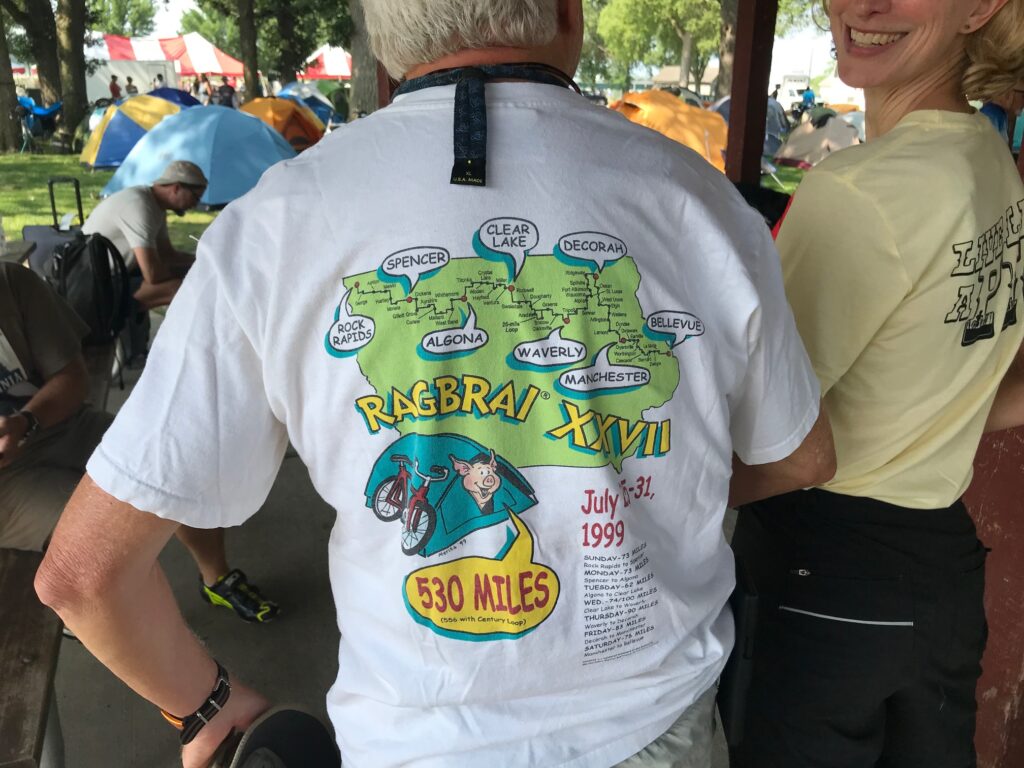

Like Chuck and Bob, many RAGBRAI riders come from far away. Many return annually. And some of them return and stay. I met a fellow rider who had moved to Iowa from California after coming to Lansing on RAGBRAI 2022. “If you come to Lansing, just ask for the RAGBRAI people,” she says. “Everyone knows who we are.” That’s why she moved to the Driftless – to join a place of tight-knit community.
Traveling Mercies
Beyond the riders, what makes RAGBRAI an unparalleled experience and a national treasure are the thousands of Iowans who participate in it every year – without biking at all. They organize the host towns. They open their shady yards for rider respite. They host riders overnight. They set up cooling stations with sprinklers. They give out water, and beer too. They grill hamburgers in their yard and give them away.
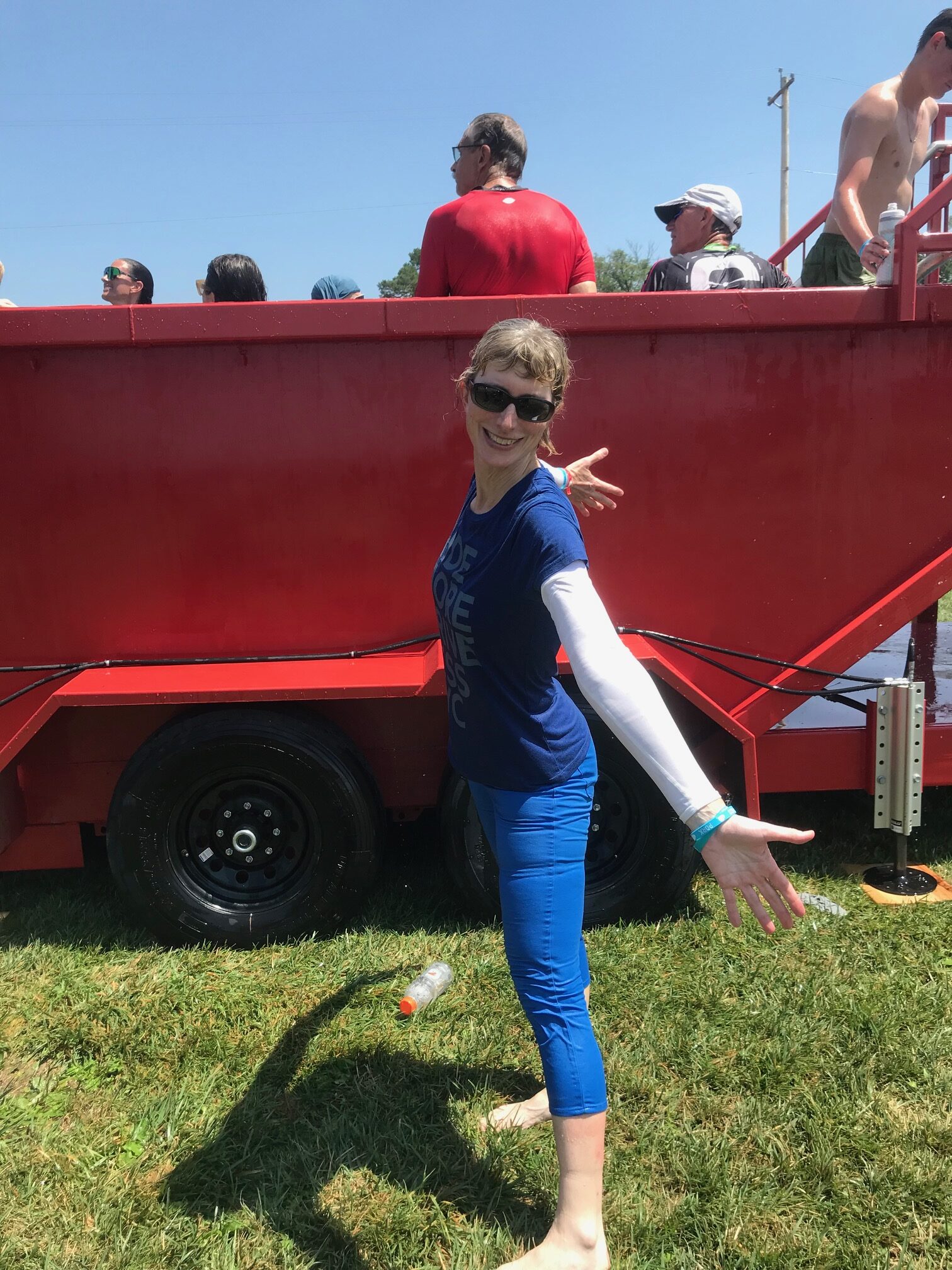
They create a community of support and care that feeds and fuels the mass craziness of hopping on two-wheelers (and related vehicles) and pedaling an average of 468 miles over seven days during the hottest time of the year.
Last year, the longest day of the ride (89 miles), with the most elevation gain (4,218 feet), was Day 5, Des Moines to Tama-Toledo. As if making up for the fact that bridge construction caused us to be rerouted onto a gravel road, the tiny town of Colfax (pop. 2,200) provided extraordinary hospitality. A farm along the way set up a respite station with a Porta-Potty, water, and a shade tent with a fan. Howard Street Christian Church served homemade pie, cinnamon rolls, and ice cream sandwich cookies with their building open for riders to sit in air conditioning and use their bathrooms. A little farther down the street, a historical sign proclaimed the town’s connection to cycling history, with the story of Leo Welker, “Colfax’s Black Cycling Champion.” He was a teenage cycling phenomenon who competed for Grinnell.
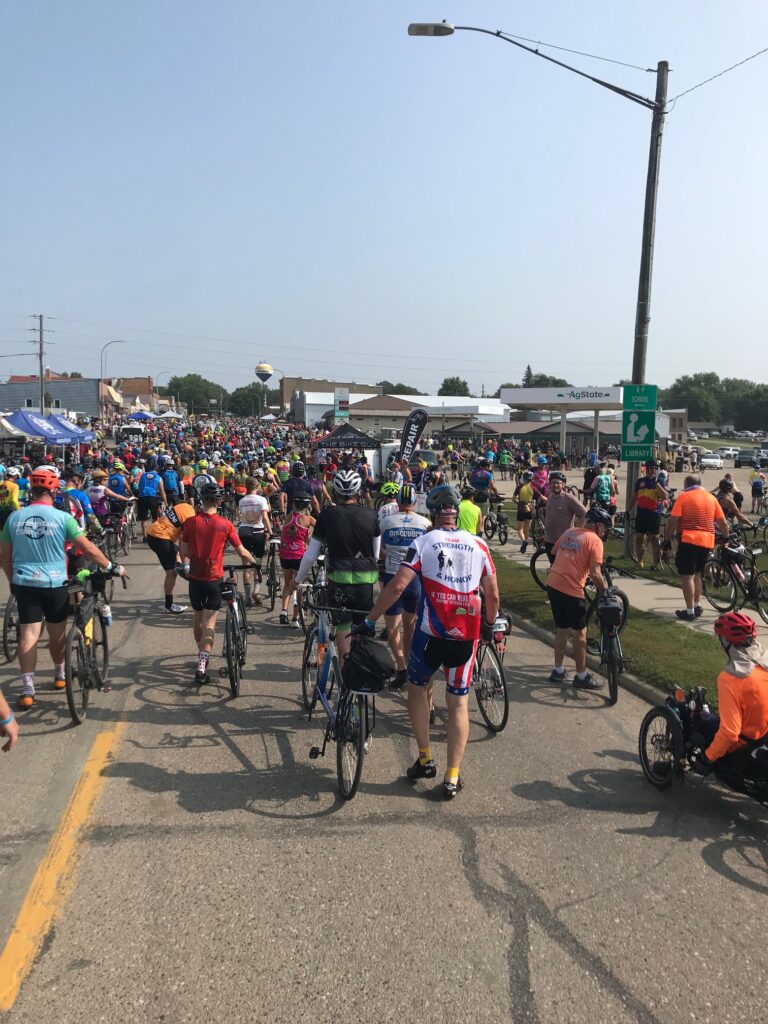
Let me be clear: RAGBRAI is tough. Last year it was especially hot, and long, and crowded. I witnessed one scary crash caused by people riding too close together. Amazingly, even the rider who flew off her bicycle asked with concern about the person who had caused the accident. “She took a hard fall, and I know she must feel really bad. Is she ok?”
Toward the end, Gail asked me, “If RAGBRAI was a movie, what kind of movie would it be?” My answer was, “A thriller-horror-comedy-action-adventure movie all rolled into one.” And we chowed down on free watermelon and danced with a man dressed in a pig costume in Muscatine, before dipping our tires in the Mississippi in Davenport, getting long showers, and treating ourselves to one last ice cream at Whitey’s.
